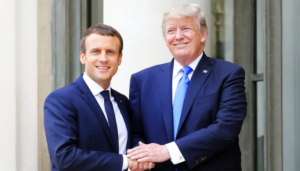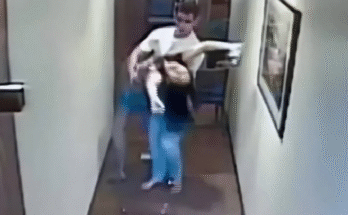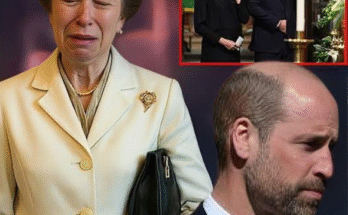Body Language Expert Reveals the Meaning Behind Donald Trump & Emmanuel Macron’s ‘Intense’ Handshake
When U.S. President Donald Trump and French President Emmanuel Macron met for a high-profile diplomatic engagement, their handshake quickly became the subject of widespread analysis. Known for its firm grip and lingering tension, the exchange sparked a flurry of speculation from body language experts, who dissected every aspect of the interaction to determine what it said about the leaders’ relationship.
At first glance, the handshake seemed typical — a firm, respectful greeting between two world leaders. However, as the handshake prolonged, it became clear that this was no ordinary greeting. The intensity and the manner in which both men gripped each other’s hands led body language experts to offer deeper insights into the unspoken dynamics at play.
Dr. Lillian Glass, a body language expert who frequently analyzes political interactions, noted that the handshake was charged with power dynamics. “What immediately stood out was the strength and duration of the handshake,” she explained. “Both leaders gripped each other’s hands with a force that suggested more than just a polite greeting. It was almost as if they were attempting to assert dominance right from the start.”
Trump, known for his strong handshakes, has often been seen using this tactic to establish authority in interactions. His handshake with Macron was no different — his palm faced down, which is traditionally a subtle sign of dominance, asserting his position in the interaction. Macron, however, did not appear to be intimidated. Instead, he kept his grip firm and unyielding, which Dr. Glass interpreted as Macron’s response to Trump’s attempt at power play. “Macron didn’t relinquish control. His equal pressure in the handshake showed that he was ready to stand his ground,” Dr. Glass said.
The prolonged nature of the handshake also added layers of meaning. While handshakes are typically brief, this one lasted longer than usual, indicating a silent negotiation between the two leaders. “It wasn’t just a greeting. It was a silent battle for power and dominance,” Dr. Glass observed. The extended length could also signal an attempt to display mutual respect, with both leaders perhaps trying to prove that they could engage with each other as equals.
Another important aspect of the interaction was their eye contact. Both men maintained direct eye contact throughout the handshake, which in body language terms signifies confidence and control. “This was not a handshake of submission. Both Trump and Macron wanted to communicate strength and assertiveness,” said Dr. Glass. “The eye contact was crucial because it showed that neither of them was backing down, which is a strong message in international diplomacy.”
What made this handshake even more interesting was the context surrounding it. The meeting took place against a backdrop of ongoing geopolitical discussions and tensions, particularly concerning trade, climate change, and the future of NATO. The handshake was, in many ways, a microcosm of the broader diplomatic exchange, where power, respect, and subtle challenges were at play. It was a visual representation of the nuanced relationship between the two men, balancing mutual respect with underlying competition for dominance.
In the end, the handshake between Donald Trump and Emmanuel Macron offered more than just a physical greeting — it was an encapsulation of the complex and sometimes combative dynamic between two global leaders. The body language spoke volumes, revealing the unspoken negotiation of power and the carefully measured respect both men held for one another.


